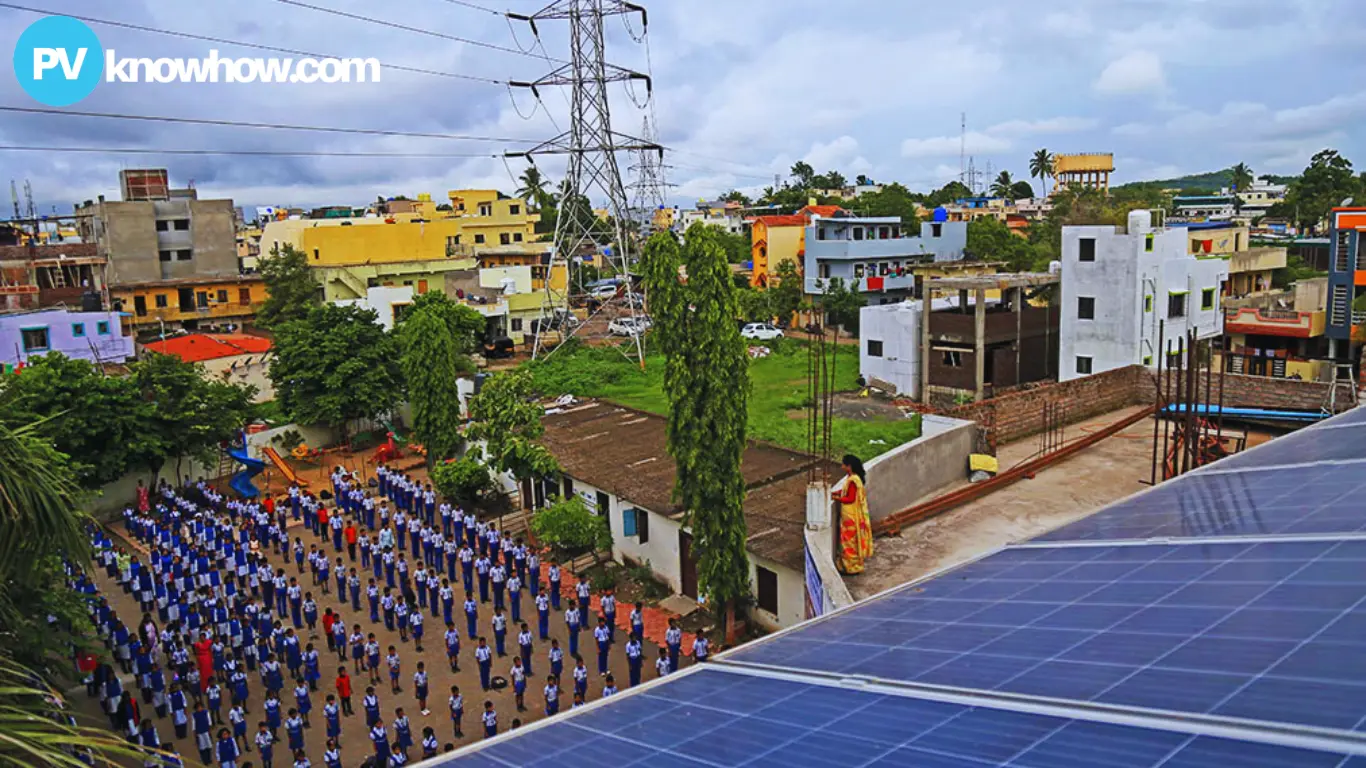Solar panels are transforming schools across Solapur district by addressing energy challenges that improve educational outcomes. In just few months, this initiative — driven by local educators and supported by Corporate Social Responsibility (CSR) efforts — has equipped 19 schools with solar power, providing uninterrupted electricity and reducing costs for nearly 9,000 students.
Solar Panels for Schools Initiative Transforming Education in Solapur
In the village of Gorewasti, the Gorewasti Zilla Parishad (ZP) School was once plagued by power cuts that disrupted classes and hindered access to modern teaching tools. Now, thanks to a 1 kW solar panel installed on its rooftop, the school has continuous access to educational content through smart TVs and other electronic devices. This has significantly improved the learning environment for the 26 students.

Image: Collected
Gorewasti ZP is just one of many schools reaping the benefits of solar power. Across the district, in villages such as Warawade, Paritewadi, Aahergaon, Venegaon, Akumbhe, and Akole Budruk, 17 Zilla Parishad schools and two government-aided schools, with a combined enrollment of nearly 9,000 students, have either become energy-neutral or are generating more solar energy than they consume.
The teacher and in-charge principal at Gorewasti ZP School, Jawed Mujawar, highlighted the advantages of the school’s location on farmland with ample sunshine– which makes it ideal for solar energy generation. The school now plans to purchase computers for both students and teachers, thus enhancing the educational experience. This effort is led by Ranjitsinh Disale — a teacher at another ZP school who won the Global Teacher Award in 2020 — with funding from the Exim Bank's CSR initiatives.
For schools in remote areas where electricity has always been scarce and commercial rates prohibitively high, the introduction of solar panels has been a game-changer. For instance, the Mahatma Phule Vidyalay in Warawade village, with 712 students, used to spend over Rs. 10,000 a month on electricity. Now, its smart classrooms are largely powered by solar energy, significantly reducing operating costs.
The Growing Role of Solar Energy in Education
The adoption of solar technology is expected to continue growing, providing schools and communities with more sustainable and cost-effective energy solutions. As these technologies evolve, they will offer even more affordable and accessible options, ensuring that future generations can benefit from enhanced educational opportunities powered by clean energy.
Government programs and incentives play a crucial role in promoting solar energy adoption. These include financial assistance such as subsidies, tax rebates for businesses and homeowners, and grants to encourage the installation of solar panels. Schools stand to gain significantly from these initiatives, making solar energy an increasingly viable option for educational institutions.
Implementing solar panels in schools involves a systematic approach. Schools need to estimate their current energy consumption to determine the necessary solar capacity, assess available rooftop space or open land for installation, and conduct a technical and economic feasibility study to evaluate the potential benefits and costs.
Steps to Implement Solar Energy in Schools
Strategic alliances with renewable energy companies (non-profits) and government bodies can provide the necessary technical and financial assistance. Collaborating with solar energy experts is essential to design a system tailored to the school's energy needs and site conditions. Schools should also ensure they work with reputable vendors who offer high-quality solar panels, inverters, and other equipment with warranties.
Training staff and students in solar energy systems is crucial for successful operation and maintenance. By monitoring the system's performance and energy output, schools can maximize the benefits of their solar installations. Additionally, incorporating energy-saving practices into the school's daily routine can further enhance the learning environment and contribute to a more sustainable future.
The solar panel initiative in Solapur district serves as a model for how sustainable energy solutions can transform education. By providing reliable and cost-effective energy, these projects not only improve the learning environment but also promote environmental stewardship and community empowerment.
As solar technology continues to advance, schools across India and beyond can look to Solapur as an example of how to harness the power of the sun to create a brighter, more sustainable future for education.
